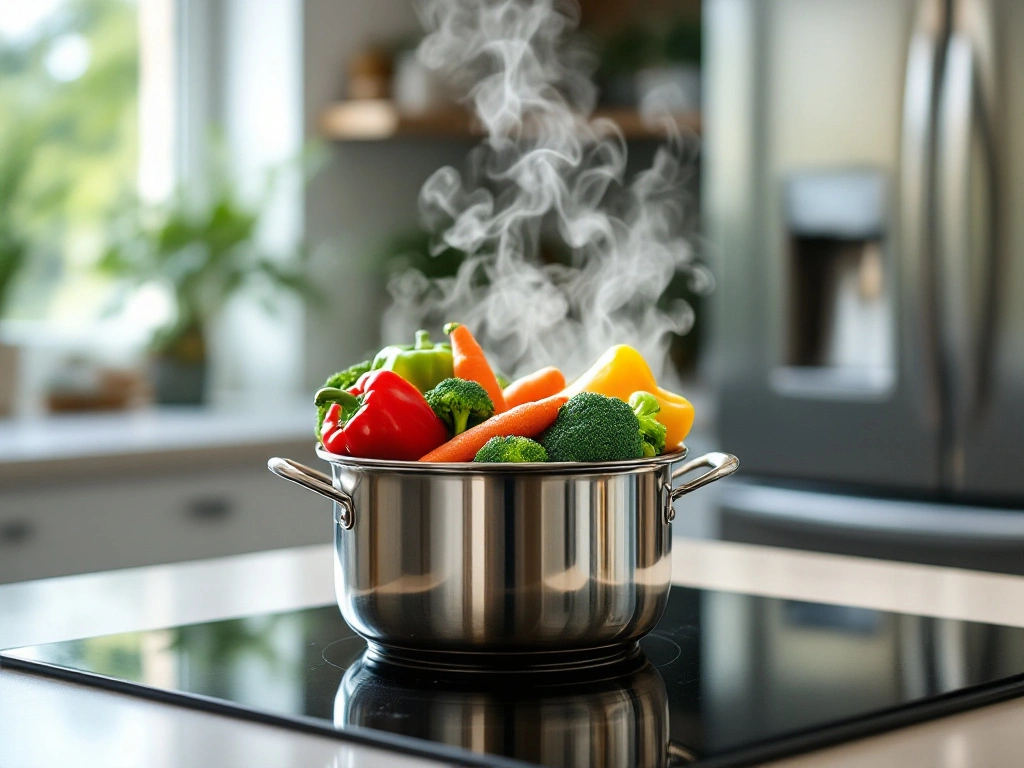Healthy Flavors: How to Add Distinctive Flavors to Healthy Food
Introduction
In a world where health-conscious eating is becoming increasingly prevalent, the challenge often lies in making nutritious food not just good for the body but also a delight for the taste buds. The misconception that healthy food is bland and unappetizing is a barrier that many face when trying to adopt a healthier lifestyle. However, the truth is that healthy food can be bursting with flavor, provided you know how to enhance it. This article delves into the art and science of adding distinctive flavors to healthy food, ensuring that your meals are both nutritious and delicious. From understanding the basics of flavor profiles to exploring innovative cooking techniques, we will guide you through various strategies to elevate your culinary creations.
Understanding Flavor Profiles
The Basics of Flavor
Flavor is a complex combination of taste, aroma, and texture. The five basic tastes—sweet, sour, salty, bitter, and umami—form the foundation of any dish. Understanding how these tastes interact is crucial for creating balanced and flavorful meals. For instance, a touch of acidity (sour) can brighten a dish, while umami (savory) can add depth and richness.
Balancing Flavors
Balancing flavors is key to creating a harmonious dish. A well-balanced meal should have a mix of different tastes that complement each other. For example, a salad can be balanced with the sweetness of fruits, the acidity of vinegar, the saltiness of cheese, and the bitterness of greens. Experimenting with different combinations can help you discover what works best for your palate.
The Role of Aromatics
Aromatics, such as garlic, onions, ginger, and herbs, play a significant role in enhancing the flavor of healthy dishes. These ingredients release volatile compounds when cooked, which contribute to the overall aroma and taste of the food. Incorporating aromatics into your cooking can transform a simple dish into a flavorful masterpiece.
Techniques for Adding Flavor to Healthy Food
Herbs and Spices
Herbs and spices are the easiest and most effective way to add flavor to healthy food. They not only enhance taste but also offer numerous health benefits. For example, turmeric has anti-inflammatory properties, while cinnamon can help regulate blood sugar levels.
- Fresh Herbs: Basil, cilantro, parsley, and mint can add a burst of freshness to salads, soups, and main dishes.
- Dried Spices: Cumin, paprika, coriander, and chili powder can add depth and complexity to your meals.
Marinades and Rubs
Marinades and rubs are excellent for infusing flavor into proteins and vegetables. A good marinade typically consists of an acid (like lemon juice or vinegar), oil, and seasonings. The acid helps tenderize the food, while the oil and seasonings add flavor.
- Example Marinade: Combine olive oil, lemon juice, garlic, and oregano for a Mediterranean-inspired chicken marinade.
- Example Rub: Mix smoked paprika, cumin, and a touch of brown sugar for a flavorful rub for grilled vegetables.
Cooking Methods
The way you cook your food can significantly impact its flavor. Different cooking methods can bring out different aspects of the ingredients.
- Grilling: Adds a smoky flavor and caramelizes the surface of the food.
- Roasting: Enhances the natural sweetness of vegetables and creates a crispy exterior.
- Steaming: Preserves the natural flavors and nutrients of vegetables.
- Sautéing: Quick cooking over high heat can lock in flavors and create a delicious crust.
Umami Boosters
Umami, the fifth taste, is known for its savory and rich flavor. Incorporating umami-rich ingredients can elevate the taste of your healthy dishes.
- Tomatoes: Fresh or sun-dried tomatoes add a natural umami flavor.
- Mushrooms: Varieties like shiitake and porcini are rich in umami.
- Soy Sauce: A small amount can add depth to stir-fries and marinades.
- Nutritional Yeast: A vegan option that adds a cheesy, umami flavor to dishes.
Innovative Ingredients for Healthy Flavor
Fermented Foods
Fermented foods are not only packed with probiotics but also offer unique and complex flavors. Incorporating fermented ingredients can add a tangy and savory dimension to your meals.
- Kimchi: A Korean fermented vegetable dish that adds a spicy and tangy flavor to rice bowls and salads.
- Sauerkraut: Fermented cabbage that can be used as a topping for sandwiches or a side dish.
- Miso: A Japanese fermented soybean paste that can be used in soups, marinades, and dressings.
Citrus and Vinegars
Citrus fruits and vinegars are excellent for adding brightness and acidity to dishes. They can balance out rich flavors and add a refreshing note.
- Lemon and Lime: Use zest and juice to add a fresh, tangy flavor to salads, seafood, and vegetables.
- Balsamic Vinegar: A versatile vinegar that can be used in dressings, marinades, and even desserts.
- Apple Cider Vinegar: Adds a tangy flavor to sauces and can be used in pickling.
Nuts and Seeds
Nuts and seeds not only add crunch and texture but also contribute to the overall flavor profile of a dish. They can be used in various forms, such as whole, chopped, or as a paste.
- Tahini: A paste made from sesame seeds that adds a rich, nutty flavor to dressings and dips.
- Almonds: Toasted almonds can add a crunchy texture and nutty flavor to salads and grain bowls.
- Chia Seeds: Can be used as a thickening agent in puddings and smoothies, adding a subtle nutty flavor.
Healthy Fats
Healthy fats, such as olive oil, avocado, and coconut oil, can enhance the flavor and mouthfeel of your dishes. They also help in the absorption of fat-soluble vitamins.
- Extra Virgin Olive Oil: Adds a rich, fruity flavor to salads and roasted vegetables.
- Avocado: Creamy and rich, avocado can be used in smoothies, spreads, and salads.
- Coconut Oil: Adds a subtle sweetness and tropical flavor to baked goods and stir-fries.
Practical Tips for Flavorful Healthy Cooking
Plan Ahead
Planning your meals in advance allows you to incorporate a variety of flavors and ingredients. It also helps in ensuring that you have all the necessary components to create a balanced and flavorful dish.
Experiment with Global Cuisines
Exploring different cuisines can introduce you to new flavors and cooking techniques. Each culture has its unique way of using herbs, spices, and cooking methods to create delicious and healthy dishes.
- Mediterranean: Focuses on fresh vegetables, olive oil, and herbs like oregano and thyme.
- Asian: Utilizes soy sauce, ginger, garlic, and sesame oil for bold and savory flavors.
- Indian: Known for its use of spices like cumin, coriander, turmeric, and garam masala.
Use Fresh Ingredients
Fresh ingredients have a more vibrant flavor compared to their processed counterparts. Whenever possible, opt for fresh herbs, vegetables, and proteins to maximize the taste of your dishes.
Don’t Overcook
Overcooking can lead to a loss of flavor and nutrients. Pay attention to cooking times and aim to preserve the natural flavors and textures of your ingredients.
Taste as You Go
Tasting your food as you cook allows you to adjust the seasoning and balance of flavors. It’s easier to make adjustments along the way rather than at the end.
Conclusion
Healthy eating doesn’t have to be synonymous with bland and boring food. By understanding flavor profiles, experimenting with herbs and spices, and exploring innovative ingredients, you can create healthy meals that are both nutritious and delicious. The key is to be adventurous and open to trying new flavors and techniques. Remember, the journey to flavorful healthy eating is a continuous process of learning and discovery. So, don’t be afraid to experiment, taste, and adjust until you find the perfect balance that satisfies your palate and supports your health goals. Happy cooking!









Add comment